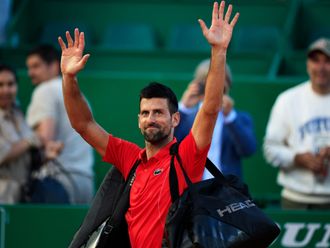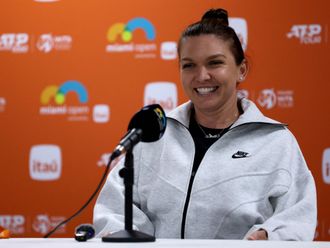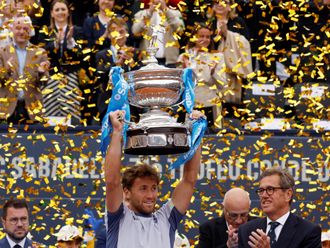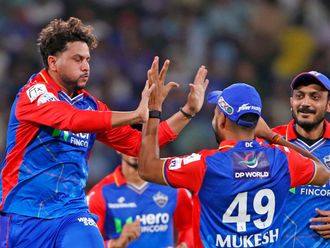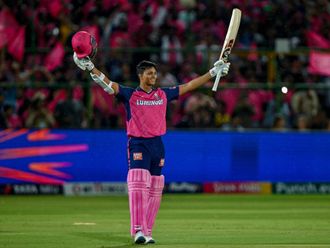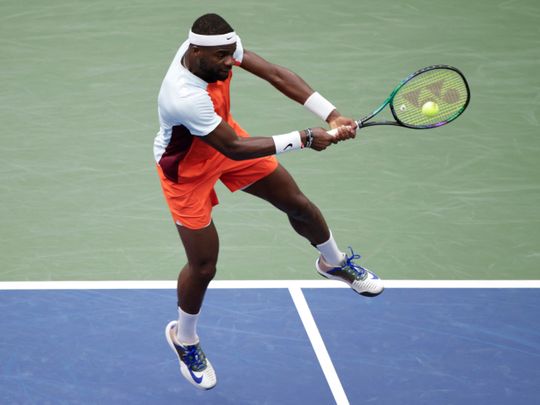
New York: Frances Tiafoe has achieved a number of career bests this year. He reached the fourth round of Wimbledon for the first time. He peaked at a career-high ranking of No 24 in the world last month. And he will play in a Grand Slam semi-final for the first time after defeating Andrey Rublev on Wednesday in the quarter-finals of the US Open. Two days earlier, Tiafoe beat second-seeded Rafael Nadal in the round of 16. After that match, the 24-year-old American partially credited his improved fitness for the victory.
“I feel fit,” Tiafoe told reporters at his post-match news conference on Monday. “Like my fitness is solid right now. I’ve slimmed out a lot. Really put the time in with that.”
Injury prevention stretches
Wayne Ferreira has stressed fitness since becoming Tiafoe’s coach in February 2020, but this year, Ferreira and others on Tiafoe’s team have noticed a shift in the way Tiafoe has dedicated himself to injury prevention stretches and exercises in the gym. Consistency has been key, his team says.
“I think he just has a much better day-to-day routine,” Ferreira said. “Even before matches, he’s doing a little workout.”
In addition to Ferreira, Tiafoe is often joined on the road by Bret Waltz, his physical therapist, and TC Costello, his strength and conditioning coach.
And while most people don’t have a tennis coach, a physical therapist and a personal trainer, Costello believes that Tiafoe’s routine can help tennis players of all levels. Below are three exercises that Costello said are part of Tiafoe’s training program.
Medicine ball workout
Medicine ball exercises are a staple of Costello’s training for tennis players. The day after Tiafoe beat Nadal, Costello had Tiafoe do 30 minutes of light medicine ball work and movement drills before Tiafoe went on the court to hit for 30 minutes.
“For tennis, I really, really love doing medicine ball work, to work on power,” said Costello, the senior director of athlete development at the Junior Tennis Champions Center in College Park, Maryland, where Tiafoe trained. “It is so similar to tennis — throwing a medicine ball — that it translates so well to the sport.”
To properly perform this drill, find a wall that you can throw a medicine ball against. Costello recommends using a medicine ball weighing between four and eight pounds or one that can be thrown with “maximum intent”. “It can’t be too heavy or you won’t be able to throw the ball that hard,” he added.
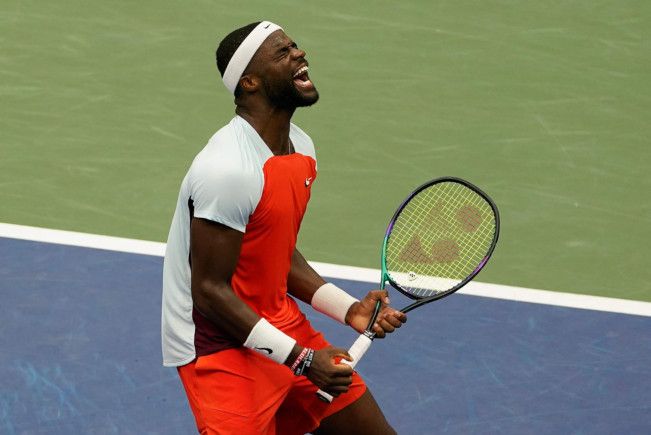
Next, stand with your feet parallel to the wall, which in tennis is called an open stance. Bring the medicine ball to one side with your knees bent, and load from the leg closest to the ball while driving the ball with as much speed as possible into the wall, Costello said. Repeat this motion with the medicine ball five times. Take a three-minute rest and then do another set of five before switching sides for two more sets of five.
For the closed stance, turn your body and feet sideways to the net. Load on the back leg and drive forward. Do two sets of five repetitions on each side while taking a three-minute rest between sets. This exercise can also be done with someone tossing the ball to you. In that version, catch the medicine ball after one bounce, load and drive from the back leg while throwing the ball back.
“The key to that drill is to throw the ball as hard as possible, and drive from that back leg and make sure you’re getting that hip through and transferring your weight and driving that ball with as much speed as possible,” Costello said. “Because that’s how you develop power. If you just go through the motions, and lightly throw the medicine ball against the wall, you’re not doing anything.”
Agility drill
Tiafoe is known for his speed. He can chase down shots and hit winners with his quickness.
One of the footwork and agility drills that Costello likes involves reaction time. Take four cones and put them about 10 feet apart in the shape of a square. Stand in the middle. When working with Tiafoe, Costello will point to the cone that he wants Tiafoe to move toward. Tiafoe will then take quick steps toward the cone and then return to the centre of the square before moving on to the next cone Costello calls out.
“Having a reactionary [component], where I’m pointing in different areas to keep the player engaged translates to tennis because you don’t know where [opponents are] going to hit the ball,” Costello said.
For quickness and speed, do three sets of this exercise for 20 seconds each time, with a minute rest in between. It can last a little longer if done as a conditioning drill.
“The movements are very similar to tennis, and I want [tennis players] to stay really low, and be quick, go down, touch the cone, come back to the middle, react to wherever I say it is,” Costello said. “If it’s one of the cones in the back, turning those hips real quick and pushing back, so the movements are similar to tennis, so you’re getting a little bit of quickness, foot work, agility work, but also reactionary work, too.”
Core exercise
A strong, stable core is important for tennis players at any level. Costello prefers training the core through anti-rotation, anti-flexion and anti-extension exercises. One exercise that he recommends is commonly known as the Pallof press.
“Because it’s an anti-rotation drill,” Costello said. “It’s working all of our core muscles.”
This can be done either with a band or cable machine. Stand straight and pull a band that’s tied securely toward the centre of your body and then in, slightly below your chest. Extend your arms out straight and then back. Keep your core tight and engaged. The point of the drill is that while the band or cable is pulling you in one direction, you are not letting it move the centre of your body. “You’re trying to keep your core as stable as possible,” Costello said.
Do three sets of two 12 repetitions. There are variations of the drill where a person is kneeling or in a lunge position.
No ‘magic drill’
Part of the reason that Tiafoe has been successful this year is because he’s been more consistent in applying himself to his fitness, Costello said.
That includes nutrition. “He’s just being a bit smarter with what he eats,” Costello said, while adding that Tiafoe does not adhere to any specific diets.
“I’m still eating well. Don’t worry about that … We still getting them good eats. It’s just in the crib,” Tiafoe said earlier this week.
His success is not because of a “magic drill or anything,” Costello said; instead it’s about his dedication to all things required of an elite athlete.
“Doing everything with 100 per cent engagement, whether it’s the warm-up, whether it’s the cool-down, whether it’s injury prevention work, small exercises to keep the shoulder healthy, doing that with 100 per cent engagement, and doing it consistently,” he said. “That’s been huge for him this year.”



